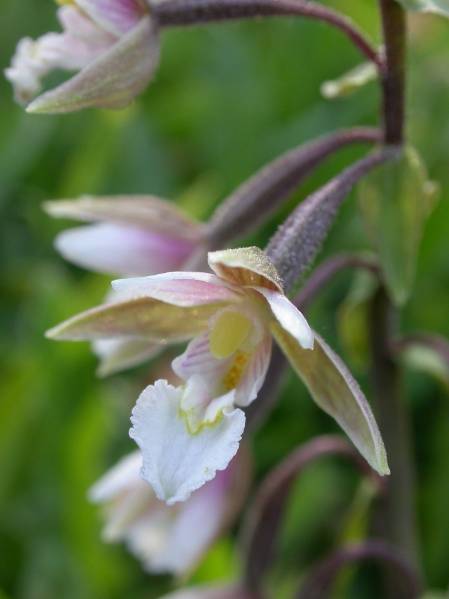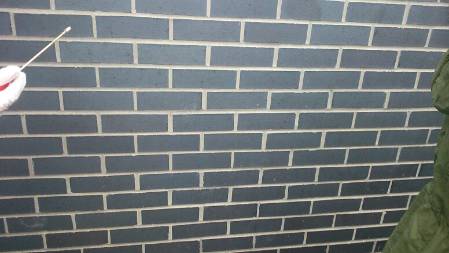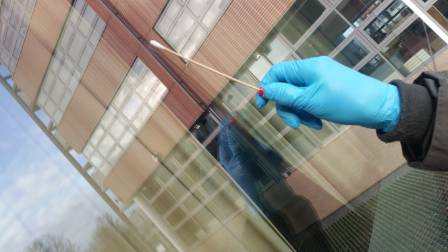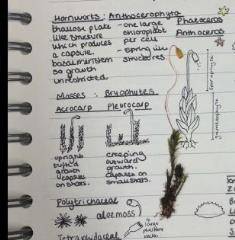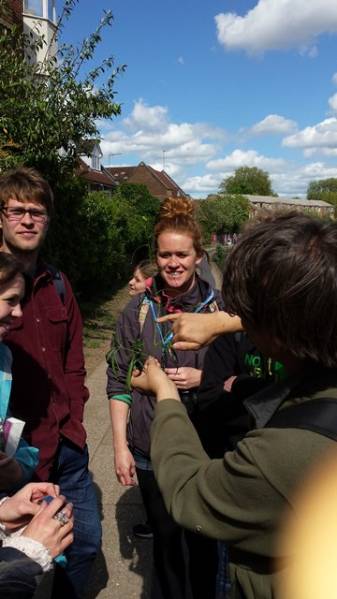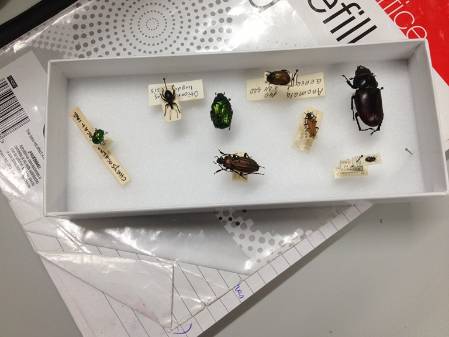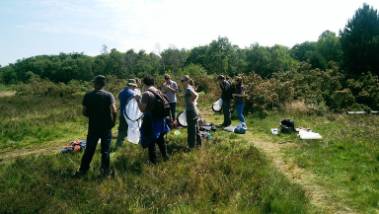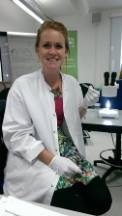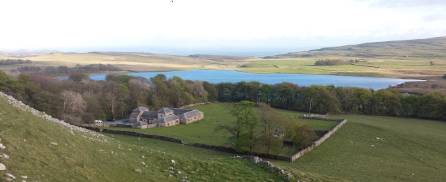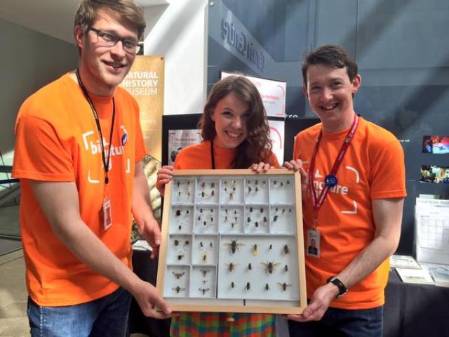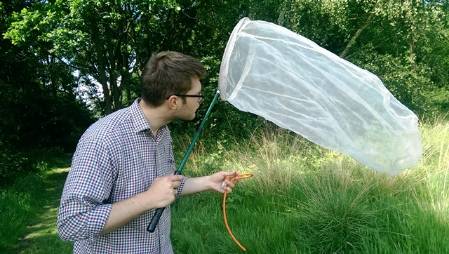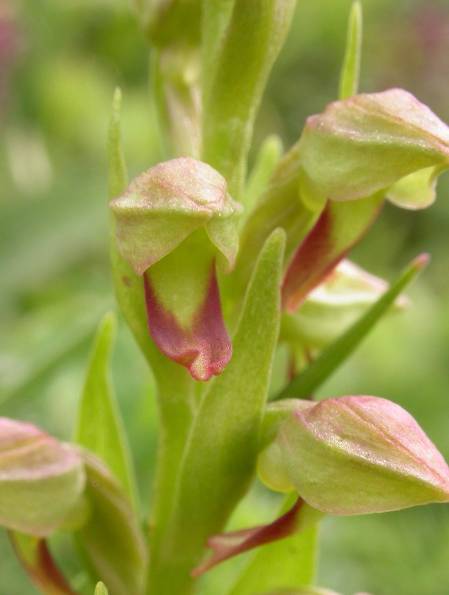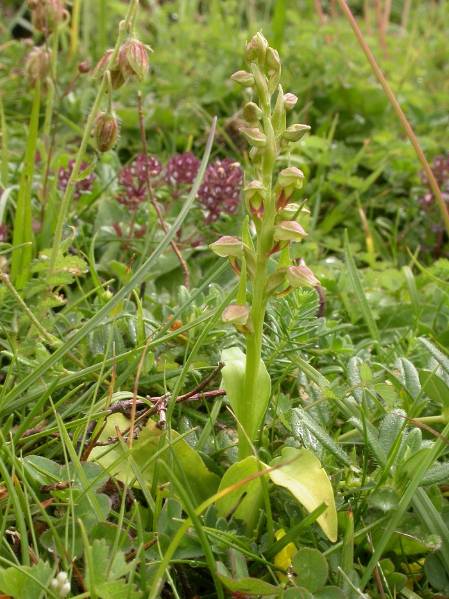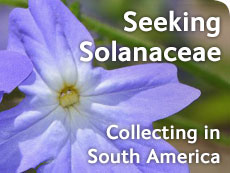The NaturePlus Forums will be offline from mid August 2018. The content has been saved and it will always be possible to see and refer to archived posts, but not to post new items. This decision has been made in light of technical problems with the forum, which cannot be fixed or upgraded.
We'd like to take this opportunity to thank everyone who has contributed to the very great success of the forums and to the community spirit there. We plan to create new community features and services in the future so please watch this space for developments in this area. In the meantime if you have any questions then please email:
Fossil enquiries: esid@nhm.ac.uk
Life Sciences & Mineralogy enquiries: bug@nhm.ac.uk
Commercial enquiries: ias1@nhm.ac.uk
Manage categories
Add a new category
Edit category
CloseCreate and manage categories in Our Science. Removing a category will not remove content.
Categories in Our Science
Manage Announcements
Add a new announcement
Edit Announcement
CloseCreate and manage announcements in Our Science. Try to limit the announcements to keep them useful.
Announcements in Our Science
| Subject | Author | Date | Actions |
|---|
Enter your announcement details below, including when you would like it to become active and expire. By default, announcements will become active immediately and expire in 7 days.
 Loading...
Loading...
Our Science

Follow the latest news from Museum researchers about their work, publications, awards, conferences and field work.
Recent blog posts
Refresh this widgetThis week we hear back from Kath Castillo, our Orchid Observers Project Officer, about what orchids you can search for in the field this month.
August is nearly here and with it the start of the holiday season, so if you are planning a walking holiday or a bit of wildlife photography in the UK, there are some stunning species on our list to look out for and photograph for Orchid Observers.
Flowering now and into late August, the Marsh Helleborine (Epipactis palustris) is a fairly large orchid with loose clusters of pink and white flowers with a white frilly lower petal. The species, which grows in wetland areas such as fens and damp dune slacks, can flower on a grand scale, with tens of thousands of plants creating a carpet of flowers. Although it may occur in profusion in some areas, the Marsh Helleborine is declining in England and Wales due to habitat loss.
A flower of the Marsh Helleborine. Photo credit: Fred Rumsey.
Marsh Helleborine photographed flowering in large numbers last summer at Berrow Dunes, north Somerset. Photo credit: Fred Rumsey.
If you are up in northern England and in north-east parts of Scotland and likely to be visiting and walking in woodland, particularly pine woods, then look out under the pine trees on the forest floor for small spikes of creamy white flowers which are very hairy! Take a look at the leaves; if the veins are distinctively net-shaped (rather than parallel as in most UK orchids) then you may well have found Creeping lady’s-tresses (Goodyera repens).
Please take a photograph and record the location and date and upload your data to the Orchid Observers website.
Creeping lady’s-tresses at Eden Valley, Cumbria. Photo credit: Mike Waller.
A similar looking species, but in another genus altogether, is Autumn lady’s-tresses (Spiranthes spiralis) which is found in southern England, most commonly by the coast This small orchid has tiny white flowers arranged in a single spiral around the stem resembling braided hair, hence the common name. An interesting fact is the leaves develop in autumn and photosynthesise throughout the winter but wither before flowering – this is an adaptation to hot dry climates. Germination to flowering takes 14 years. This is a Mediterranean species that only grows on calcareous grassland with very short turf. Look out for it in late August and into September on chalk downs, fixed dunes, cliff tops and even lawns and old grass tennis courts!
Autumn lady’s-tresses at Eggardon Hill in Dorset. Photo credit: Chris Raper.
The Orchid Observers team would once again like to thank all our participants who have been out photographing orchids and collecting records from all over the country; nearly 1600 records have been submitted so far!
Kath Castillo
Kath is a biologist and botanist working as the Orchid Observers project officer and along with the Zooniverse web team developed the Orchid Observers website. She now tries to get out into the field whenever she can to find and photograph wild orchids!
Today one of our Microverse citizen science project participants, Robert Milne, presents his own interpretation of the results of the microbial samples collected from Mid Kent College in Gillingham where he is a student:
The results:
Despite our best efforts, the samples we obtained for the Microverse project were taken in different weather conditions, at slightly different times, in slightly different areas of the building, and all three samples were taken from walls facing different directions. The materials of the surfaces we sampled were brick, glass and metal.
Mid Kent College building, swabbed by The Microverse participants.
From the results below, it can be seen that all three surfaces have about the same number of OTUs, (Operational Taxonomic Units, a phrase to indicate taxonomic groupings in microorganisms), but this does not mean that each surface has the same number of individual microorganisms. The number of genetic sequences varies greatly.
Sample Area A (brick) | Sample Area B (glass) | Sample Area C (metal) | |
|---|---|---|---|
| Number of genetic sequences generated | 88,264 | 120,498 | 27,894 |
| Number of OTUs | 2,198 | 2,107 | 1,960 |
| % of sequences that were from Archaea | 0.02% | 0.00% | 0.00% |
| % of sequences that were from Bacteria | 75.62% | 88.76% | 87.75% |
| % of sequences that were from Eukaryotes | 24.36% | 11.24% | 12.19% |
Table 1: Results from samples of microorganisms swabbed from brick, glass and metal, at Mid Kent College, Gillingham, (% rounded to 2 decimal places).
The glass surface has generated the most genetic sequences while metal has generated the least. This could mean that the bacteria on the surface of the glass are more successful than the ones on the metal, for instance.
Sample Area A - Brick.
The image above shows the brick wall from which the first sample was taken. This wall had the most eukaryotic cells present, in which the majority of them contained chloroplasts (these are the organelles of plants that convert light energy into sugar).
This wall faces southwest and a wall facing south of any kind will always receive the most sunlight on it during the day, which could explain the increased chloroplast numbers compared to the other two surface areas we sampled. The fact that this wall was also close to a lot of grass could also play a part in these numbers.
Sample Area B - Glass.
The image above shows the second surface sampled, which was glass. This had the most genetic sequences found out of all three of the surfaces we swabbed. There were, however, less eukaryotic cells on the glass and metal surfaces than on the wall.
This could be because the smooth surface of the metal and the glass meant that less eukaryote cells could remain on the surfaces for prolonged periods. The eukaryotic cells (represented by the mitochondria and chloroplast sequences in the sample) could have originated from natural wildlife around the area, such as a snail's trail or some spider webbing.
Sample Area C - Metal.
Most of the eukaryote sequences found in all samples were chloroplasts, rather than mitochondria. This probably means the surfaces always have some form of sunlight on them, which is somewhat true since all the surfaces faced either west or east to some extent.
Figure 1: The relative abundance of bacterial phyla, archaea, mitochondria and chloroplasts in the three samples.
Possible uses:
One of the prime examples for undertaking this feat of exploring more of the microbiological world is the need to find better antibiotics; resistance to antibiotics is an increasing threat in the world of medicine. Antibiotic discovery can occur via the identification of bacteria that produce chemical substances that kill or inhibit the growth of other bacteria. Once identified the chemical substance can potentially be cultured and used as a treatment to kill off bacterial infections.
Exploring the countless surfaces outside in the world is a treasure trove of information that could lead to the discoveries of new bacteria that can be used effectively as a source for an antibiotic.
However, it can also be considered that a new resilient bacteria could be discovered that can survive without much water for a long time, which may, just maybe, hold a specific DNA sequence to help relieve the effects of hunger and thirst in patients that must undergo a fast before an operation (such as colon screening). It can open up a number of new doors to the world of medicine, and with a huge percent of areas still not investigated, it could only be a matter of time before huge changes are discovered.
Robert Milne
Thank you Robert! Robert Milne is a student of Mid Kent College, who has just finished his second year of an Applied Science Level 3 course. He has a keen interest in biochemistry and genetics and hopes to enrol this Autumn on an Undergraduate degree in Chemistry at the University of Greenwich. To find out more about the Museum's citizen science projects, see our website.
Our trainees on the Identification Trainers for the Future project have been extremely busy since our last blog post, here's Mike Waller with an update on what they have been getting up to!
The trainees puzzle over their latest capture (L-R: Sally, Anthony, Mike and Katy)
Our timetables, until now a collage of various colours, have become a very busy reality over the last two months. We got our teeth into another batch of long-anticipated ID workshops - Flowering Plants, Beetles, Flies and Earthworms. I think I speak for everyone when I say the skills and knowledge we've been passed by some of the leading scientific experts in the Museum have been rich, extensive and unique. Developing techniques to hoard as much of this golden information as possible have become paramount.
I've already gathered a thick stack of mixed ID keys, notes, powerpoint handouts and even the odd specimen - usually midway through the processing to go into my personal collection. Sally has taken her learning consolidation to a new level and is producing an incredible assemblage of annotated line drawings and intricate watercolours in her note book. She'll be blogging about that separately, but we're all a little jealous!
An extract from Sallys notebook
The first of these workshops was a one-day instalment of flowering plants out in the wilds of East London with Mark Spencer. We met promptly for 9.00 at Mile End tube station before heading out in the company of other trainees from a similar scheme called Wild Talent being run by the London Wildlife Trust (also funded by the HLF's Skills for the Future programme), and people who narrowly missed out on getting the traineeship during the first round. Indeed, several places have been made available on all workshops for the other 20 trainee applicants as an opportunity to maximise the skills-base across the board. It was great to see them again!
Mark Spencer highlighting some of the finer points of plant identification
After a scorching day keying out Fabacae and crucifers, dodging cyclists and discussing the horror of path-side 'tidying', we finished in Mark's local pub for a well-earned pint. As always, Mark's casual ability to blend good science, humour and memorable anecdotes always makes for a superb time. We all very much look forward to our next sessions with him in July.
Next up was our very first invertebrate workshop, and what better to start with than beetles - the group within which both Katy and Anthony find their true passion. This workshop was a solid four-day stretch that began with Roger Booth taking us through the depths of beetle anatomy followed by some family keying. Max Barclay provided a two-part lecture on world beetle families that, for me, gave a fascinating insight into the truly spectacular speciation and morphological diversity of the group acoss the planet.
As our confidence grew, we began to use specific familiy keys to make accurate species identifications of some of the more challenging groups such as Elateridae or the 'click' beetles. Michael Geiser and Roger offered invaluable help during this process as their oceans of knowledge were repeatedly called upon.
A small selection of beetles for identification
Just as we thought we were getting to understand insects, BOOM, in swept the seemingly impenetrable order of flies - a group with unfathomable diversity! Luckily we were in very good hands as we were led through the array of sub-orders by Erica McAlister, Duncan Sivell, Zoe Adams, Daniel Whitemore and the AMC's very own Chris Raper.
In similar style to the beetles, we used familiy keys to start with then slowly graduated to species identifications where possible. This workshop however came with a difference and on the second day, we all met at Wimbledon Common for a day out collecting.
With nets, pooters and pots at the ready, we were unleased on the varied mix of heathland, pastures and oak woodlands to capture what we could. The weather couldn't have been better and gave us a golden opportunity to use collecting techniques in the field. Once back in the Museum we were then able to pin and mount our specimens for our personal collections.
Left: Out on Wimbledon Common with the Diptera team. Right: Chloe back in the lab working on her diptera slide preparation
Our most recent workshop went subterranean with Emma Sherlock as we dug up seemingly half of the Wildfowl & Wetlands Trusts London Wetland Centre in the pursuit of earthworms. Using our trusty spades, and encouraged with the possibility of encountering a rare species, we sampled different habitats around the reserve to gain a good range of species which we then took back to the lab for identification the following day. Emma's unbridled passion for earthworms is infections and we all developed a new-found interest to take forward.
If that wasn't enough, we all packed our walking boots and set out for our placements with the Field Studies Council where we were based at various FSC Centres scattered up and down the country.
During May, I made my way north to Malham Tarn, whilst Chloe took heading north to the extreme with a week at Kindrogan and Milport on the edge of the Cairngorms National Park. Meanwhile, Anthony settled at Flatford Mill in Suffolk. Sally followed the South Wales coast to Dale Fort and Katy battled her way through the winding roads of North Wales to Rhyd-y-Creau in the mists of Snowdonia.
The focus of each of our placements was 2-fold: to observe the identification courses each centre was running and to assist with the outdoor teaching for which the FSC is renowned. I got to observe a beginners course called 'Spring Wildflowers of the Dales' which, as you'd expect, concentrated on the botanical.
It was led by local botanist Judith Allinson who taught a mixture of plant structure and lineage with a good dose of field visits to observe some of the specialist plants of the stunning limestone pastures, pavements and hay meadows. Having not been to the Dales proper before, I was continually stunned by this landscape of dramatic limestone cliffs and thick green meadows chequered by moss-drenched dry stone walls where the only sounds were the melancholy warbles of distant curlews. Highlights for me were the rafts of early purple orchids, adder's-tongue ferns and a hungry peregrine attempting to snatch Lapwing chicks on the tarn shore
Malham Tarn FSC Centre
The second part of my stay saw a sudden shift from pupil to teacher as various school groups, ranging from 8-14 year olds, visited for day trips and longer stays. This meant hanging out with the tireless field teachers who work extremely long hours to meet the educational needs of over-excited children!
It was a real privilege to see the field teacher's skills in action, but equally how challenging their roles can be. Trying to deliver a range of syllabus-based content that is relevant and exciting to different age groups, whilst trying to avoid the hazards of controlling a large group of children in an unpredicatable environment is very hard indeed. These observations were echoed by the other trainees who also gained immesurably from their experiences.
To round off our teaching and learning, Sally, Anthony and I also got stuck into some more people engagement at Big Nature Day here at the Museum. This is a coming together of over 50 different specialist wildlife organisations from across the UK. These included the more familiar groups such as the BSBI and iSpot, but it also provided an opportunity for some of the lesser-known societies such as the Conchological Society of Great Britain and Ireland and the British Pteridological Society to get their name out there.
Like Lyme Regis, this was a wonderful opportunity to showcase the work of the Angela Marmont Centre while also browsing and networking with some fascinating wildlife groups. As trainees, we ran our own table providing microscopes to observe lichens and several drawers filled with UK insects and bee mimics. I also spent some of my time at the Orchid Observers stand where I helped answer questions about the project alongside Kath Castillo, Fred Rumsey and Mark Spencer.
Mike, Sally and Anthony at Big Nature Day
All in all, an inspiring day, and an inspiring, and hectic couple of months! As the traineeship progresses, we're all looking forward to our next few workshops, which include Freshwater Invertebrates, Lepidoptera and Hymenoptera, as well as our short field trip down to the Isle of Purbeck before we all set sail in September for our three month curation placements at various departments around the Museum. Make sure you stay tuned for the next instalment of the Identification Trainees saga!
Your blog author, Mike Waller
Thanks Mike! Don't forget you can find out more about the Identification Trainers for the Future project at www.nhm.ac.uk/idtrainers, including how and when to apply for next years traineeship positions.
Posted on behalf of Ranee Prakash, Curator of Flowering Plants in the Plants Division, Department of Life Sciences.
Wadakam (Hello!),
We are happy to share our recent journey to the Nilgiris in Tamilnadu, southern India in March - April 2015.
Our team from the Plants Division, Department of Life Sciences includes: >
- Xavier Aubriot - Post-doctoral Research Assistant in tropical Asia spiny solanums phylogenetics and taxonomy
- Jacek Wajer- Curator, Flowering Plants
- Ranee Prakash - Curator, Flowering Plants
The aim of the visit was to consult the herbaria of Botanical Survey of India (BSI) at Coimbatore, and Pune and also to visit Blatter Herbarium, St. Xavier’s College, Mumbai. We looked at the Solanaceae collections.
Apart from visiting BSI’s regional offices, we also visited Madras Christian College (MCC), Presidency College, National Biodiversity Authority (NBA), The Eco Park and the Theosophical Society in Chennai.
Xavier also made a brief visit to the French Institute in Pondicherry. The aim of this visit was to investigate the botanical collections of the herbarium of the French Institute, as well as to liaise with the French and Indian researchers working on the Indian flora. They are known to be particularly well curated and informative for the region of Mumbai and Pondicherry, from where Solanum trilobatum L. is native.
The Botanical Survey of India (BSI)
The BSI was established in 1890, with the main aim of surveying the plant resources and identifying plant species of economic value within the countr. With headquarters in Kolkata, it has ten regional offices in various states of India. It comes under the Ministry of Environment, Forest and Climate Change, Government of India.
We visited regional offices in Coimbatore and Pune. Coimbatore office has important collections of R.Wight (b. 6 July 1796 – d. 26 May 1872) and other collectors of the Honorable East India Company (EIC).
We databased around 400 specimens from both the regional offices. This data will be repatriated back to India. During the visit, Xavier identified Solanum species and recurated the species. For example Solanum xanthocarpum Schrad. & H. Wendl. is now Solanum virginianum L.
A detailed list of synonyms, correct taxonomy and pictures of Solanceae species is available on the Solanaceae Source website.
Madras Christian College (MCC)
Madras Christian College has a beautiful campus spread over 360 acres area with a rich flora and fauna (see Fig. 1). Originally founded by Rev. John Anderson, a Missionary from the Church of Scotland, on April 3, 1837, the college recently celebrated its 178th anniversary. Anderson is known for introducing English medium education in Southern India. MCC is an autonomous college and is renowned for academic excellence and for social commitment.
Fig 1. Madras Christian College, Chennai.
We met the faculty staff members: Dr M. Baluswami (Head-Department of Botany), Dr D Narasimhan (Associate Professor), Leslie Lawrence (Assistant Professor) and Sheeba Irwin (Research Assistant). We also had a brief chat with undergraduates and post graduate students and listened to their views on career aspirations.
Presidency College
Established in 1840, Presidency College is one of the oldest Arts College in Chennai, India. Located opposite the Marina beach in Karmalai area in Chennai, the building has very beautiful architecture (see Fig. 2). The college has various streams viz. Arts, Science, Commerce and has facilities for research leading to Ph.D. degree.
Fig 2. Presidency College, Chennai Ravichandar84.
We looked at P.F. Fyson’s (1877–1947) botanical collections stored in the College’s herbarium (see Fig.3). Fyson was a noted botanist and educator who worked in Southern India. During the period of 1920-1925, he served as Inspector of Schools for Vishakapatnam and Ganjam districts (Andhra Pradesh). He later returned to the Presidency College and served as Principal from 1925-1932.
Fig 3. PF Fyson.
Fyson is famous for many books and illustrated volumes that he wrote from 1912-1932.In 1912, he wrote a textbook of Botany for college students.
He is renowned for the first illustrated volumes of the South Indian Hills, 'The Flora of the Nilgiri and Pulney Hill-tops' which was published in 1915. This book has 286 illustrated pages and 483 species. This book was followed with a book on plant species from the lower elevations and notes on the Shevaory Hills in 1921. In 1932, he published 'The Flora of the South Indian Hill Stations', which covered 877 species. Besides these, he also wrote a book on Madras flowers - illustrated 100 plates, a monograph on the genus Eriocaulon and a Flora of the South Indian Hills.
In his honour, the Presidency College, Chennai has instituted 'The Fyson Prize' for work in the area of Natural Sciences.
Theosophical Society at Adyar, Chennai
Founded in 1875 in New York, the International Headquarters moved to Adyar, Chennai in 1882. The main aim of this body is universal brotherhood and the members are united to learn the purpose of existence through, self-responsibility, study, reflection and loving service.
Located between the Adyar River and the coast, the society is spread in 100-hectare grounds and provide a green, peaceful, vehicle-free retreat from the city. One can wander through the native and introduced flora, including a 400 year old banyan tree. Some of the plants that we saw in the garden and will not forget include the Sandbox tree, also known as Dynamite tree (see Fig. 4).
Fig 4. Hura crepitans, commonly known as sandbox tree.
Botanically, this plant is known as Hura crepitans belonging to the Euphorbiaceae family and the Cannon Ball tree - botanically known as Couroupita guianensis belonging to Lecthidaceae family (see Fig. 5a, b).
Fig 5a. Fruits of Couroupita guianensis, commonly known as cannon ball tree.
Fig 5b. Flower of Couroupita guianensis commonly known as cannon ball tree.
The French Institute at Pondicherry
Inaugurated after the cessation of French Territories to India in 1955 (i.e. the 5 cities of Pondicherry, Karikal, Yanaon, Mahé and Chandannagar), the French Institute of Pondicherry is very active in the study of South Indian civilisation and culture. Since the 60s, it has also developed an important ecology department, specialised in collecting information on the evolution of the environment in South India. From this time, the researchers of the Institute have constituted a herbarium which counts today more than 24,000 specimens.
Xavier visited the herbarium, annotated and databased all the Solanacae specimens present in the collections (more than a 100). This trip to Pondicherry has been also an ideal occasion to exchange contacts with the French and Indian researchers working there on various aspect of the Indian flora (mostly forest ecology), and Xavier has presented his research project during a conference. During a short tour at the Pondicherry Botanical Garden with Soupramanien Aravajy, the most knowledgeable botanist of the IFP, we were happy to find, hidden in the bushes, the small (and terribly spiny!) Solanum trilobatum L. (see Fig. 10).
After three days of work in this quiet and beautiful “Petite France”, it was difficult to come back to busy Chennai…
Besides visiting the Institutes, we also visited some historic temples in Chennai, Coimbatore, Mahabalipuram (also known as Mamallapuram) and Madurai belonging to the Chola and Pallava dynasty (around 3rd to 6th century C.E.). We were amazed with the absolute beauty of architectural designs. It was sweltering hot in India with temperatures around 38-40 degrees centigrade but the food was delicious with so many varieties of Kathrik kai (brinjal) (see Figs. 6a & 6b), Valai palam (banana) and the lovely chutneys made from Takali (tomatoes) and puli (tamarind). We had rice Arisi (rice) for lunch and dinner, lots of keerai (leafy vegetables) and tanni (water) to keep us hydrated!
Fig. 6a. Solanum torvum( sundaikkai) sold in the market.
Fig 6b. Brinjal varieties sold in the market.
As our journey came to an end, we would like to reflect on the memorable wander to the Nilgiris, the picturesque memories for years to linger including the highest Peak Point 'Doddabetta' in the Nilgiri Mountains at 2367 metres (8650 feet). This is where the Eastern and Western Ghats meet (see Fig. 7). The endless vibrant greenery of the tea estates (see Fig. 8) (wonder what it must be like when there were undisturbed forests) and the beautiful architectural buildings of the various temples and palaces.
Fig. 7. Doddabetta Peak (highest point 2637m, where the Eastern and Western Ghats meet).
Fig. 8. Tea plantation in the Nilgiris.
We would like to convey our warm Nandri (Thank you- in Tamil) and gratitude to all the staff at various Institutes. A special Nandri to Dr D.Narasimhan at MCC, Dr V Sampath Kumar, Dr G V S Murthy, Dr Beniamim, G. Gyanansekaharan and Kannamani at BSI for all the hospitality and help (see Fig. 9).
Fig. 9. Staff at BSI Coimbatore office.
Great way to collaborate and open the boundaries! Come on India.
Fig. 10. Solanum trilobatum L., growing along the path, Pondicherry Botanical Garden.
For July, the Orchid Observers team are simultaneously excited and fretting. We're excited because we're planning field trips to see the next orchids on our hit list, but we're also concerned about the flower spikes scorching in the sun and wilting. It might be a race against the sun this month to catch July's finest orchids. Not only that but this month's highlight species are some of the trickiest to spot and identify. Please don't let this deter you, take up the challenge and see if you can locate and photograph these beauties.
Bog orchid (Hammarbya paludosa)
The bog orchid (Hammarbya paludosa) is the tiniest of the UK orchid species. © Mike Waller.
Being the tiniest of the UK orchids, the bog orchid can be rather inconspicuous. It's just 4-8cm tall and green and there are only 25 flowers on the flower spike, which are said to smell sweet and cucumber-like.
As its name implies this species lives on bogs, growing among clumps of sphagnum moss. It needs to live in areas that don't dry out, even in a hot summer. When the summer is hot it flowers earlier than when the summer is cool and wet.
Being a bog plant it's our Scottish contributors that are going to have most opportunity to find this one. But there are a few colonies dotted around England, in Cumbria, northwest Yorkshire, Northumberland, one-site in Norfolk, Cornwall, Devon, Dorset, Hampshire and some in the west of Wales.
The bog orchid (Hammarbya paludosa) has very distinct flowers, that small sweet and cucumber-like. © Mike Waller.
Frog Orchid (Coeloglossum viride)
Keep an eye out for the frog orchid (Coeloglossum viride) which is found across the UK. © Fred Rumsey.
The frog orchid can be found across the UK, but only in small localised patches. It is more easily found in the north and west of the UK, having declined in the south due to changes in land management.
It is quite a hard plant to spot as it is only 5-15cm tall and mostly green in colour. But you can find it on short chalk or limestone grasslands in the south, and in all sorts of places in the north, from railway embankments and road verges, to grasslands and dune slacks.
The flowers of the frog orchid have a very enclosed green hood and a long red lower lip, which is lobed at the end. It's classified as vulnerable, so please take extra care when you find this orchid.
The frog orchid (Coeloglossum viride) can be found on chalk and limestone grasslands in the south of England. © Fred Rumsey.
Now for a last chance to see:
Lesser butterfly-orchid (Platanthera bifolia) and Greater butterfly-orchid (Platanthera chlorantha).
Its a last chance to see the greater butterfly-orchid (Platanthera chlorantha). © Mike Waller.
Distributed across the UK the lesser butterfly-orchid and greater butterfly-orchid are really quite difficult to tell apart. But here are some top features to help you distinguish between the two.
Compared to the greater butterfly-orchid, the lesser butterfly-orchid is shorter, it carries less flowers and it usually flowers a little bit later. It can be found on damp heathlands and moorlands, or in deciduous woodland, whilst the greater butterfly-orchid is found on deciduous woodland and chalk grassland.
But the most reliable way of telling the two apart is in the positioning of the pollinia (the pollen bearing structures of the flower). In the lesser butterfly-orchid the pollinia are closer together and parallel to each other, while in the greater butterfly-orchid the pollinia are further apart and slant inwards at the top.
The lesser butterfly-orchid (Platanthera bifolia) can be identified by its parrallel pollinia. © Mike Waller.
The greater butterfly-orchid (Platanthera chlorantha) has pollinia that are further apart and slant inwards.
Of the two, the lesser butterfly-orchid is classified as vulnerable, due to large declines, particularly in south-eastern regions, so again please be extra vigilant when locating this species.
If you manage to find any of the 29 species of orchid we are conducting our research about, then don't forget to take a photo and upload it to the Orchid Observers project here. And if it just gets too hot to go outside then get online and help us transcribe data from our orchid herbarium sheets.
Find out more about our Orchid Observers project and how you can get involved.
Jade Lauren
Jade Lauren Cawthray is Citizen Science Project Officer in the Angela Marmont Centre for UK Biodiversity, where she develops and runs citizen science research projects. Having studied an undergraduate degree in Ecology and Conservation and then a master's degree in Science Communication, Jade is combining her two passions, nature and public engagement, by pursuing a career in citizen science.
Catch up with our blogs
Collections
- Brachiopods and cephalopods
- Beetle blog
- Conulariids and fossil bryozoans
- Curator of Diptera
- Curator of Lepidoptera
- Curator of Micropalaeontology
- Fossil fish blog
- Wasp blog
Research
- Meteorites research group
- Nightshades: the paradoxical plants
- Super-flies and parasites
- Tropical botany researcher
- Whale, dolphin and porpoise strandings
News
From the field
- Antarctic conservation
- Exploring cyanobacteria
- Seeking nightshades in South America
- Field work with Nature Live
From our archive
- Antarctica: discovering lichens
- Fossil hunting in Indonesia
- Investigating aubergines in China
- Searching for meteorites
- The wild spiny aubergine hunt
- Under the Southern Ocean
Events
At the Museum
- Contact and enquiries
- Accessibility
- Website terms of use
- Information about cookies
- © The Trustees of the Natural History Museum, London



